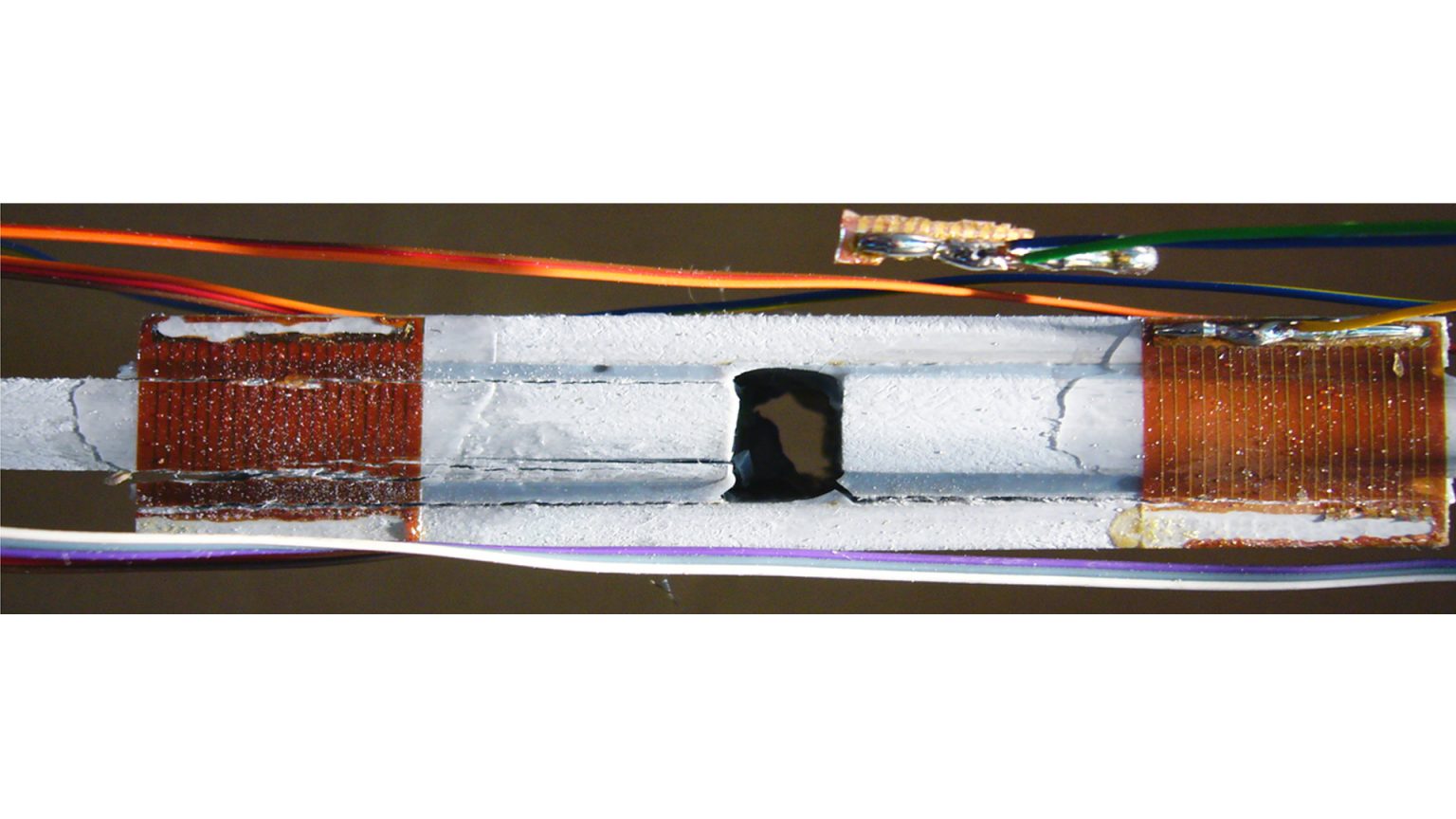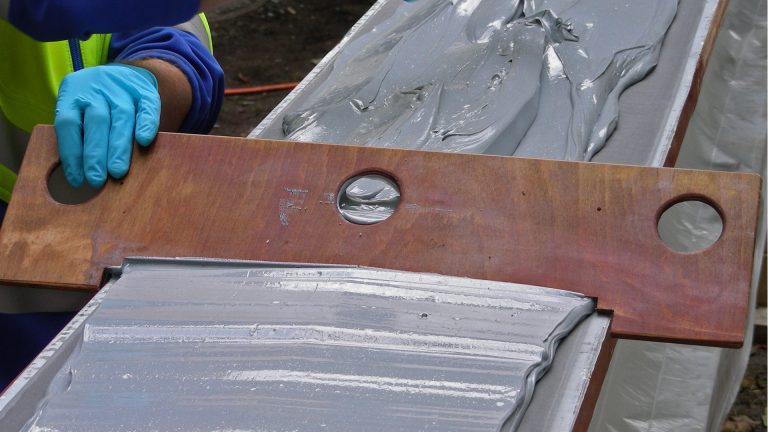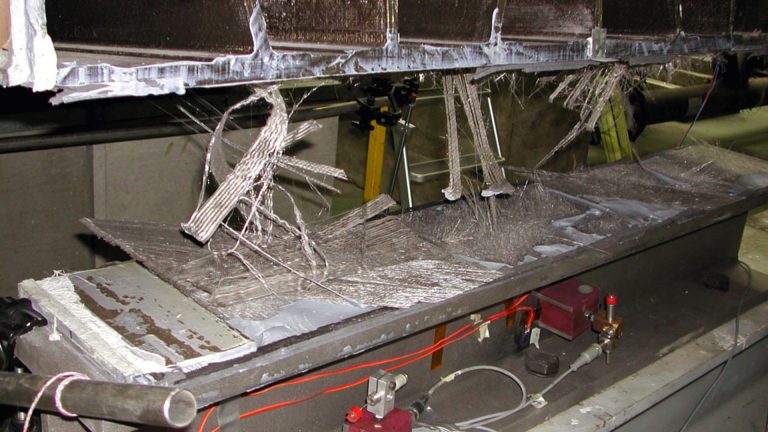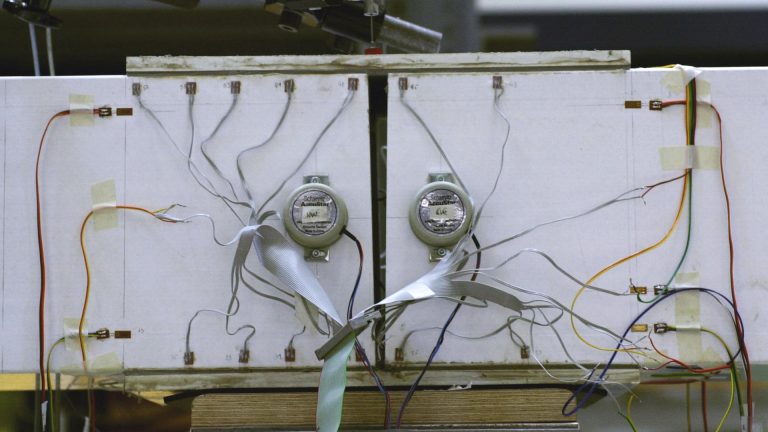Adhesive joints
Structural adhesives have been used in bridge construction for strengthening purposes for decades. Recent applications are bonding of fiber-reinforced polymer (FRP) bridge decks onto main bridge girders. The adhesives are normally applied on the construction site and are thus cold-curing systems that are not yet fully cured in the early age. In winter, low temperatures may further delay curing and the development of physical and mechanical properties.
During their service life, the adhesives may be subjected to various physical and chemical aging mechanisms, which can be active simultaneously with different reversible or irreversible effects on their physical and mechanical properties.
In the case of FRP structures, whose basic material behavior is brittle, the lacking material ductility may be compensated on the structural system level by incorporating system ductility, e.g. by the use of ductile structural adhesives in FRP component joints.


Cold-curing adhesives
– Effect of low ambient temperature on curing and property development
– Viscoelasticity, ductility, recovery, physical aging
– Environmental effects on physical and mechanical properties

Epoxy FRP joints
– Failure analysis and criteria, probabilistic strength prediction
– Fatigue and fracture (see corresponding research area)
– FRP bridge deck-to-steel girder joints

Ductile FRP joints
– Load redistribution capacity
– Load-deformation modeling
– Loading rate dependency and creep